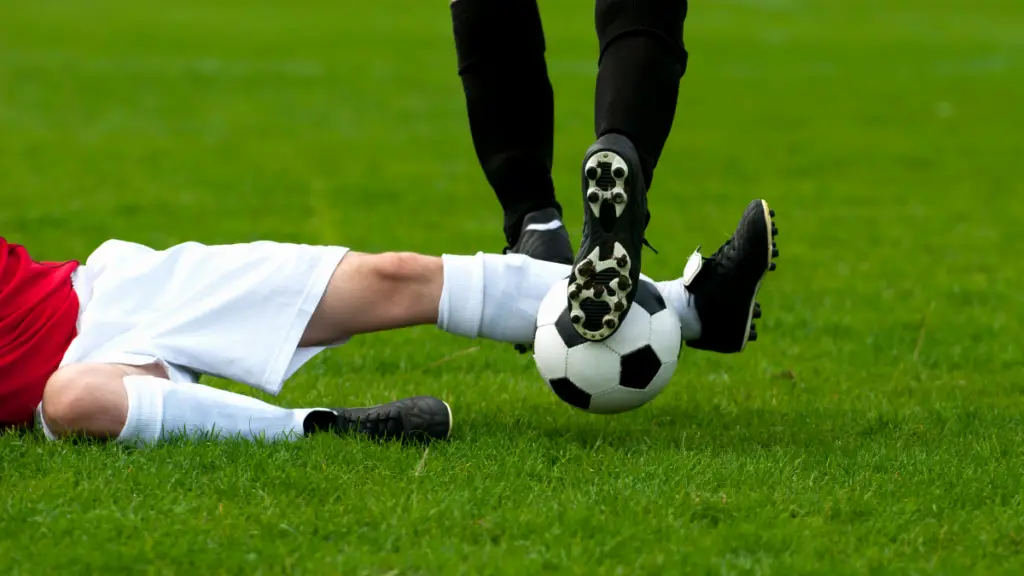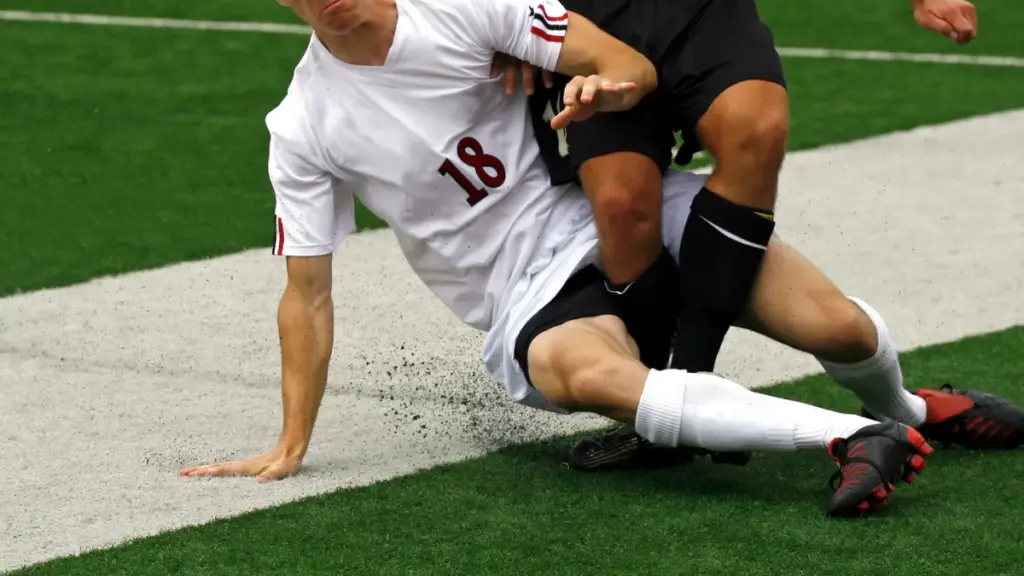The Slide Tackle in Soccer: A Comprehensive Guide
A perfectly executed slide tackle in a soccer match can make the crowd go wild, raising the game’s intensity and excitement. Players and fans alike appreciate a well-timed slide tackle for its thrilling, high-stakes nature. But what exactly is a slide tackle, and how can players use it effectively? In this article, we’ll explore everything you need to know about slide tackling in soccer, including its legality, benefits, risks, and techniques for teaching younger players.
What Is A Slide Tackle?
A slide tackle is a technique in which a player slides on the ground with a single outstretched leg to regain possession of the ball from an opponent. The sliding player connects with the ball, knocking it away from the opponent or even stealing it for themselves. Often used as a last-ditch effort to prevent an opponent from scoring, slide tackles are an essential skill for players in all positions.

Advantages Of Slide Tackling
- Surprise and Speed: Slide tackles can catch speedy opponents off guard, as defenders can cover more ground quickly and challenge the ball as the attacker receives or dribbles it.
- Psychological Edge: The aggressive nature of a slide tackle can intimidate opponents and give defenders an advantage in subsequent challenges, making attackers more hesitant when they receive the ball or engage in a 50/50 duel.
Potential Risks Of Slide Tackling
- Vulnerability: A failed slide tackle leaves the player on the ground and takes time to recover, potentially exposing the entire team to scoring opportunities.
- Disciplinary Action: Poorly timed or overly aggressive slide tackles can lead to yellow or red cards, impacting the team’s chances of success.
- Injuries: Incorrectly executed slide tackles may result in severe injuries to both the tackler and the player being tackled.
Is Slide Tackling Legal?
As long as it’s done correctly, slide tackling is a legal way to regain possession of the ball. However, if a referee judges a tackle to be careless, reckless, or made with excessive force, a free kick will be awarded to the opposing team. Due to the dynamic nature and speed of slide tackles, there’s a higher-than-average chance that a referee may consider it a foul.
When Is A Slide Tackle Considered A Foul?
A slide tackle is deemed a foul under the following circumstances:
- High Tackle: The tackling player jumps instead of sliding, with their feet off the ground.
- Studs Up: The tackler’s cleats face upward and toward the opponent, rather than down and away.
- Tackle from Behind: The slide tackle comes from behind, and the tackler makes contact with the opponent before the ball.
- Two-footed Tackle: The slide tackler uses both feet and lunges at the ball, often resulting in a sending-off.
- Missed Ball: The slide tackler misses the ball completely, connects with the opponent, and obstructs play.
Is It Legal To Slide Tackle From Behind?

Slide tackling from behind is legal, provided the tackler doesn’t go through the opponent and make contact with their legs before the ball. The defender must hook their foot around the attacker and connect with the ball first, all while ensuring the safety of the attacker.
At What Age Can Players Slide Tackle?
FIFA allows players of all ages to perform slide tackles. However, individual leagues may have their own rules regarding slide tackling in youth and high school games due to injury risks. To be certain of the rules in a specific league, consult their website or handbook. If there is no mention of slide tackling, it is generally allowed.
Teaching Slide Tackling to Young Players
When teaching slide tackling to young players, it’s essential to emphasize safety and proper technique. Here are some steps to help introduce slide tackling to children:
- Break down the technique: Begin by explaining the fundamentals of slide tackling, including body positioning, timing, and targeting the ball.
- Demonstrate the proper technique: Show young players the correct way to perform a slide tackle. This includes sliding on the ground with one leg outstretched, keeping the studs facing down, and making contact with the ball first.
- Practice on soft surfaces: Have players practice slide tackling on a soft surface, such as grass or artificial turf, to minimize the risk of injury during training.
- Emphasize timing: Teach players the importance of timing their slide tackles to ensure they make contact with the ball and not the opponent. This can be practiced through drills that focus on anticipating an opponent’s movement and reacting accordingly.
- Teach sportsmanship: Encourage young players to respect their opponents and avoid reckless or dangerous tackles that could lead to injuries or disciplinary actions.
- Gradual progression: Introduce slide tackling in small-sided games and gradually increase the level of competition to help young players gain confidence in using this skill during matches.
Wrapping Up
When performed correctly, a slide tackle can be one of the most impressive and game-changing moves in soccer. It’s a tool that, used strategically, can disrupt an opponent’s attack and turn the tide of a match. However, it’s essential to bear in mind its legality, the associated risks, and the need to execute it safely and skillfully. For young players aspiring to master this skill, it’s vital to be taught the correct techniques, ensuring they understand when and how to use a slide tackle appropriately. Above all, the slide tackle symbolizes soccer’s inherent thrill – the blend of strategy, skill, and sometimes, sheer bravery, that makes the sport so universally loved.

